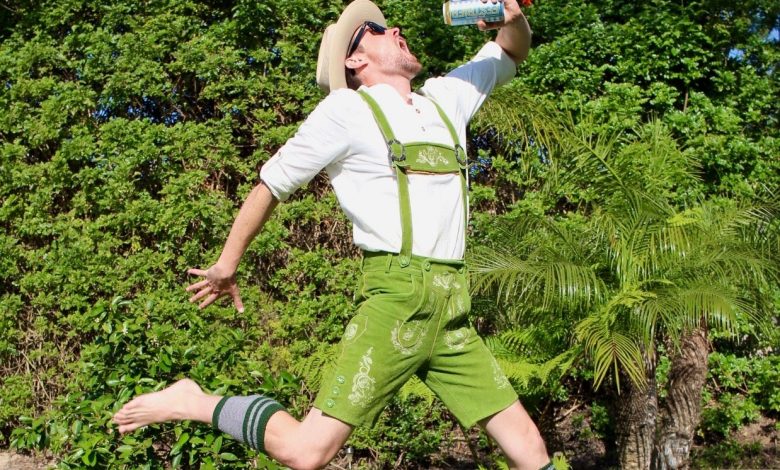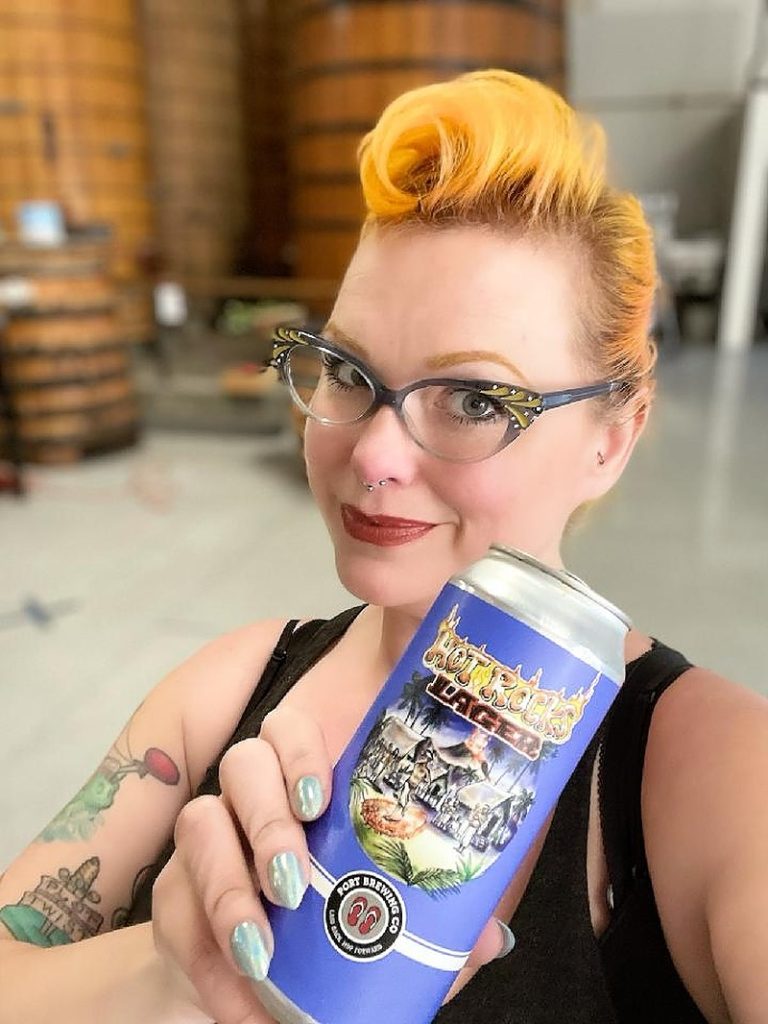
By Shannon Lynnette
Hail Ostara!
Bringer of sun beams; Proctor of squalls; Harbinger of Life.
Gone are the arduous sorrows of Winter; ardent is the benevolence of Spring.
Ready your hearty salutations, raise your cups, and revel.
The world is bountiful anew.”
Shannon Lynnette, SDBN Beer History Columnist
The equinox has passed and, for the next couple of months, we sit comfortably in the warmth of spring. While in present day, this ushers in occupation of sunny patios, pouring of libations down gullets and basking in the glow of assorted company for long stretches of forgotten hours, for our ancient transatlantic predecessors in Bavaria, this time of year represented a different type of bustle and brought with it an earnest brand of hope.
Spring was a time for regeneration. Fields would be sown, and crops would be planted; livestock would be birthed, fed and fattened; and beer would be brewed and tucked away in cool mountain cellars where it would remain, untouched and slowly fermenting for months on end. Spring was a season of preparation, while summer consisted of long, laborious days, and (pending the success of the latter) fall was a time for harvest and reward. Through it all, triumphs were celebrated and downfalls assuaged by beer, the style of which was based largely on two factors: yeast and government injunction.
Until Louis Pasteur’s 1876 discovery of the microorganism that transforms glucose into ethanol, humankind had zero inkling of yeast’s existence. Instead, fermentation was given divine credence. This is precisely why beer, wine and other alcoholic beverages are prominently featured in various religious rituals throughout a multitude of cultures. They—and their mind- and mood-altering qualities—were considered a gift from the heavens bestowed upon the world by deities. Three centuries removed from Pasteur’s revelation, sixteenth-century Bavarian brewers didn’t fully understand the science of their craft but were industrious enough to adapt and forge the foundation for a brewing culture that would grow into a global archetype. But it didn’t happen overnight.
The process of lagering (more on that later) which would forever shape the German brewscape was ushered in by decree of a Bavarian duke. In 1516, Duke Wilhelm IV issued the Reinheitsgebot, a purity law which disallowed the brewing of beer with any ingredients other than hops, water and barley. It helped that this agricultural triad consisted wholly of government-taxed ingredients, but that wasn’t the only reason it was enacted. The world’s oldest food-safety regulation, the Reinheitsgebot was an attempt to eradicate beer that not only tasted terrible, but also made drinkers sick. While a reduction in utilizable ingredients streamlined beer recipes, it did not fully expunge beer-borne illnesses.
Sixteenth-century sanitation practices weren’t exemplary. Come summer, the warmer temperatures made veritable petri dishes of brewery fermentation vessels. Resulting bacterial build-up not only made beers taste unpalatable, but all too often rendered them unsafe for consumption. So, in 1553, Duke Wilhelm’s successor, Duke Albrecht V, issued a decree that forbade the brewing of any beer during the warmer half of the year, using a pair of Catholic occasions as regulatory period bookends—the Feast of Saint George on April 23 and Michaelmas on September 29. This had lasting effects, not only on the taste of German beers, but also the yeast that fermented them.
The most crucial element affecting yeast is temperature. Like most organisms, yeast have specific thresholds for heat and lack thereof. After or below a certain point, they will cease to eat, become stressed and die. In terms of flavor, warmer fermentation temperatures result in beers with more esters (acid-derived chemical compounds which manifest from a sensory perspective as fruity flavors and aromas) while the opposite occurs at cooler fermentation temperatures. With no ability to control temperature in ancient times, beer flavor profiles were reliant on seasonal climates. Following Duke Albrecht’s decree, all Bavarian brewing took place in conditions that were mild to gelid. Fermentation was taking place at colder temperatures, the kind in which Saccharomyces Pastorianus, a slower-moving, bottom-fermenting yeast, thrives. As a result, that strain and the lagers it produced rose to prominence, forming the foundation for the clean and orderly family of beers for which the region would become renowned.

Derived from the root lagern (German for “to store”), “lagering” came to refer to the cold-fermentation process most German beers underwent. Most commonly, these beers would be stored in cavernous areas and hand-dug cellars until proper occasion called for them to be retrieved and consumed. This was storage practice until the eighteenth century, when brewers began harvesting ice to emulate these conditioning temperatures while keeping their fermenting beers within reach. This new, longer conditioning period not only created more shelf-stable beers, but also reduced protein haze, resulting in a less opaque beer with slowly dissipating carbon dioxide that scrubbed away any lingering, off-putting flavors that might be present.
The strength of the beers from this era also came to reflect the time the beers spent in storage as well as the seasons they were to be consumed in. One of the last beers to be brewed before the onset of the government-mandated offseason were forerunners of the modern-day Märzen (German for March). Often weighing in at 6% alcohol-by-volume (ABV), comparatively strong for the beers of their day, the higher alcohol content aided in the beer’s conditioning. Meanwhile, the toasted breadiness from darker malts made for a fitting and enjoyable transition between summer’s kellerbiers (unfiltered “cellar beers”) and winter’s dunkels (dark beers).
Conversely, the Maibock—“Mai” is German for “May”—was brewed in January to aptly be enjoyed in May. Also seen under the nomenclature heller (pale) bock, this beer style sat at the commensurate strength of a bock (6.5-7.5% ABV) while offering a higher perceived bitterness than its tamer counterparts. The cordial relationship between the dry body and earthily spicy hops found in Maibocks makes them well suited for springtime’s increasing warmth and occasional brisk stints.
Born of good intent and optimism, it is apt that the spring would serve as a proponent of the creation of the world’s most consumed beer styles. And yet, left to idle in the shadows of memory, these styles exist in perplexing scarcity across the gamut of many American craft portfolios. Fortunately for us, San Diego brewers have afforded us a different, better fate.
This spring, I implore you, esteemed Reader, make haste to the closest brewery or bottle shop and fill your bellies and cellars with the wide spectrum of lagers that hearty tradition has delivered us. We emerge from a season that has been onerous and dark; let us shake the somber chill from our bones and explore the zymurlogic realm which our progenitors had the good sense to traverse.

Audacious San Diego Brewers & Offers in Obscurity:
- Boӧtes – Maibock | Bear Roots Brewing (Vista)
- Festbier – Oktoberfest/Wiesn (field style) | Eppig Brewing (Vista, Point Loma, North Park)
- Plenty For All – Zwickelbier | Fall Brewing (North Park)
- Abaddon – Helles | Modern Times Beer (Point Loma, North Park, Encinitas)
- Hot Rocks – Stein Bier | Port Brewing (San Marcos, San Elijo, Cardiff-by-the-Sea) *
* This beer (pictured above) is produced using a unique historical procedure. Swing by Port’s tasting room to pick the brains of the staff.
Safe Refuge for Stimulus Money: Bine & Vine in Normal Heights is replete with beer styles past the shuffle of hops and hype. The extremely knowledgeable owner, Geoi Bachoua, is a great person to consult if you’re looking to expand your breadth of lager understanding.
Standouts for your shopping list: Ettaler Curator Dunkler Doppelbock, Hofstetten Kubelbier and Hacker-Pschorr Münchner Gold. Have fun descending into the lager rabbit hole.
Celebrating a Love of Lagers: Eppig Brewing‘s Frühilingsfest Celebration, an annual homage to German beer, food and culture, will take place this weekend, April 23-25, at the company’s Waterfront Biergarten in Point Loma, followed by a second rendition of at their Vista HQ and Bierhalle on Saturday, May 1.

